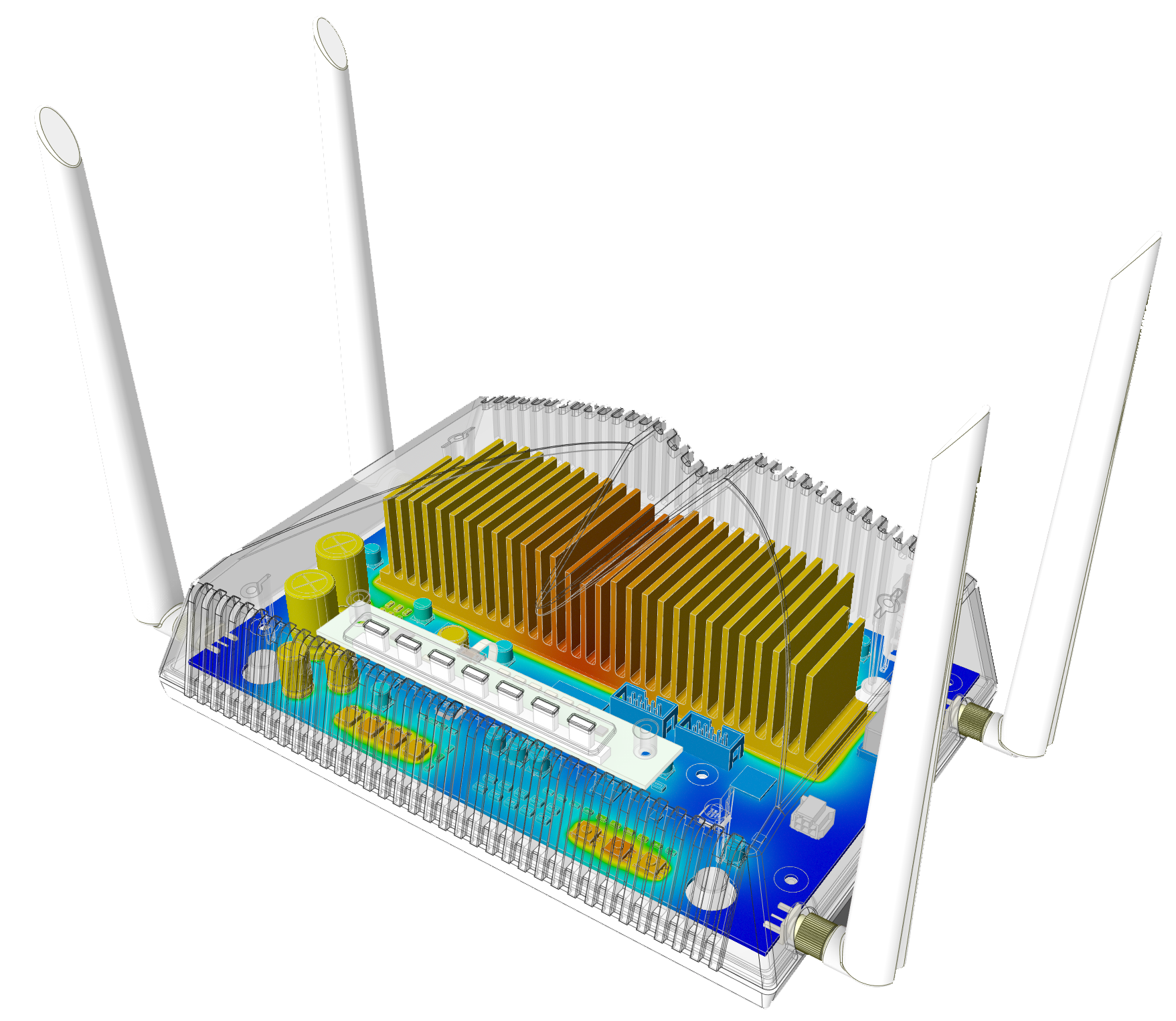Ansys Optics is a comprehensive suite of optical simulation tools designed to assist engineers in designing, testing, and optimizing optical systems across various industries. Its core tools, Ansys SPEOS, Lumerical, and Zemax, offer a range of capabilities from simulating light propagation and material interactions to designing photonic circuits and performing detailed lens system analysis. Supports advanced design processes for automotive lighting, virtual reality systems, sensors, and more, making it essential for industries like automotive, aerospace, and healthcare. With support for both macro and nano-scale optical systems, the suite integrates well with other Ansys Multiphysics tools, providing highly accurate simulations under various mechanical or thermal stresses.
- Multiphysics Photonic Modelling
- Optical Component Modeling
- Diffractive optics & waveguides
- Emissive structures
- Lens stack optimization
- Optomechanical tolerancing
- Structural & Thermal Optics
- 3D environment integration
- Human vision / perception
- Exterior & Interior Lighting
Capabilities
Ansys Optics combines optical, thermal, and mechanical simulations, providing a holistic approach to product development. This integration reduces the need for physical prototypes, saving time and costs while improving product reliability. Whether used for developing advanced sensor technologies, optimizing lighting for vehicles, or enhancing the performance of AR/VR systems, Ansys Optics helps deliver cutting-edge innovations with greater speed and accuracy, making it a versatile and essential tool for modern optical system design.
Explore our capabilities!
Photonics Inverse Design Optimization
Lumerical's photonics optimization framework allows precise control over electromagnetic field distributions, crucial for minimizing loss and reflection. It supports complex structures like metasurfaces and metalenses, making it a key tool for designing next-generation photonic devices. This feature optimizes design efficiency, enabling faster iterations and more reliable outcomes in applications like CMOS image sensors and photonic integrated circuits (PICs). It provides significant improvements in performance and energy efficiency, especially in dense photonic environments.
Software
Diffractive Optics
The integration of Lumerical and Zemax provides a comprehensive solution for designing diffractive optics, such as metalenses and diffraction gratings. These devices manipulate light at a very fine scale, requiring precise simulations of both wave and geometric optics. By combining the strengths of both platforms, engineers can design diffractive elements that are optimized for performance, efficiency, and manufacturability. This feature is particularly useful in applications like imaging systems, sensors, and advanced optical communications.
Software
Laser and Gain
In laser systems, optical gain is the process by which the intensity of light is amplified through stimulated emission in an energized medium. This gain is essential for sustaining laser operation, as it compensates for losses within the system. Ansys Optics software, such as Lumerical, provides detailed simulations of laser dynamics, including gain coefficients and efficiency, making it easier to design lasers that meet specific performance criteria. These tools are vital for developing high-precision lasers used in various fields, from industrial cutting to scientific research.
Software
Photonic Crystal
Photonic crystals are optical materials with periodic structures that affect the motion of photons, much like how a semiconductor influences the flow of electrons. These crystals are designed to create photonic band gaps, preventing certain wavelengths of light from propagating through the material. Ansys Lumerical provides tools to simulate and optimize photonic crystals, enabling their use in applications like optical communication, sensors, and lightwave circuits. Their ability to control light at the nanoscale makes them essential for next-generation photonic devices.
Software
Human Vision Simulation
Speos includes tools for simulating human vision, allowing designers to understand how light and color will be perceived in real-world environments. This feature is critical in applications like automotive HUDs and dashboard displays, where the user's visual experience must be optimized. By simulating the human eye’s response to lighting conditions, engineers can refine designs to improve usability and safety. The tool supports complex scenarios like varying lighting conditions, glare, and reflections, ensuring accurate visual performance.
Software
Optical Design Optimization
Zemax OpticStudio provides advanced tools for optimizing optical systems, including lenses, lighting, and lasers. This feature supports both sequential and non-sequential ray tracing, allowing for detailed analysis of light paths and interactions within optical systems. Engineers can use this tool to fine-tune optical components for maximum performance, ensuring that designs meet both aesthetic and functional requirements. The optimization capabilities also help reduce costs by identifying the most efficient materials and configurations early in the design process.
Software
Photonics Circuit Simulation
Lumerical enables co-simulation of photonic circuits, integrating electronic and photonic components into a single workflow. This is especially valuable in designing photonic integrated circuits (PICs), which are increasingly used in telecommunications, data centers, and advanced computing. The tool allows for the modeling of complex interactions between light and electrical signals, ensuring that circuits perform optimally under various conditions. It also supports the simulation of thermal effects, providing a comprehensive view of circuit performance.
Software
Scattering
Scattering occurs when light interacts with particles or irregularities in a medium, causing it to deviate from its original path. This phenomenon is critical in applications like imaging, sensing, and telecommunications, where scattered light can affect signal clarity and efficiency. Ansys Optics tools, such as Lumerical, allow for detailed simulations of scattering events, helping engineers understand and mitigate its effects in optical systems. This is especially useful in designing clear and efficient systems for medical imaging, fiber optics, and environmental sensors.
Software
Electromagnetic Simulation for Photonics
Lumerical’s electromagnetic solvers, including FDTD (Finite-Difference Time-Domain), offer highly accurate simulations for nanophotonic devices. These solvers are critical for designing components like photodetectors, modulators, and waveguides, where light interacts with materials at the nanoscale. The simulations provide detailed insights into how light behaves within these devices, helping engineers optimize their performance. This feature is essential for industries like telecommunications, where precise control over light propagation is critical.
Software
Lens System Design
Zemax OpticStudio offers robust tools for designing and optimizing lens systems, from simple lenses to complex multi-element systems. The software supports both sequential and non-sequential ray tracing, allowing engineers to model how light travels through lenses with high precision. This is essential for applications like imaging systems, where optical clarity and focus are critical. By simulating the entire optical path, engineers can ensure that lens systems meet stringent performance requirements.
Software
Software Sales
If you have any general questions about our Ansys, Moldex3D, Dante, Particleworks, or CF Turbo simulation software (quotation, licensing, training), please contact us using one of the following contact details. Please note that our software is only available to customers from the following countries: Hungary, Slovenia, Croatia, Serbia, Bosnia and Herzegovina, Montenegro, and Macedonia.
sales (at) econengineering.com
+36 1 279 0320

Greg Lipóczi, Dr.
Commercial Director

László Molnár, Ph.D.
Academic & Key Account Representative

Péter Bara
Key Account Manager
East Hungary

János Simon
Key Account Manager
West Hungary


